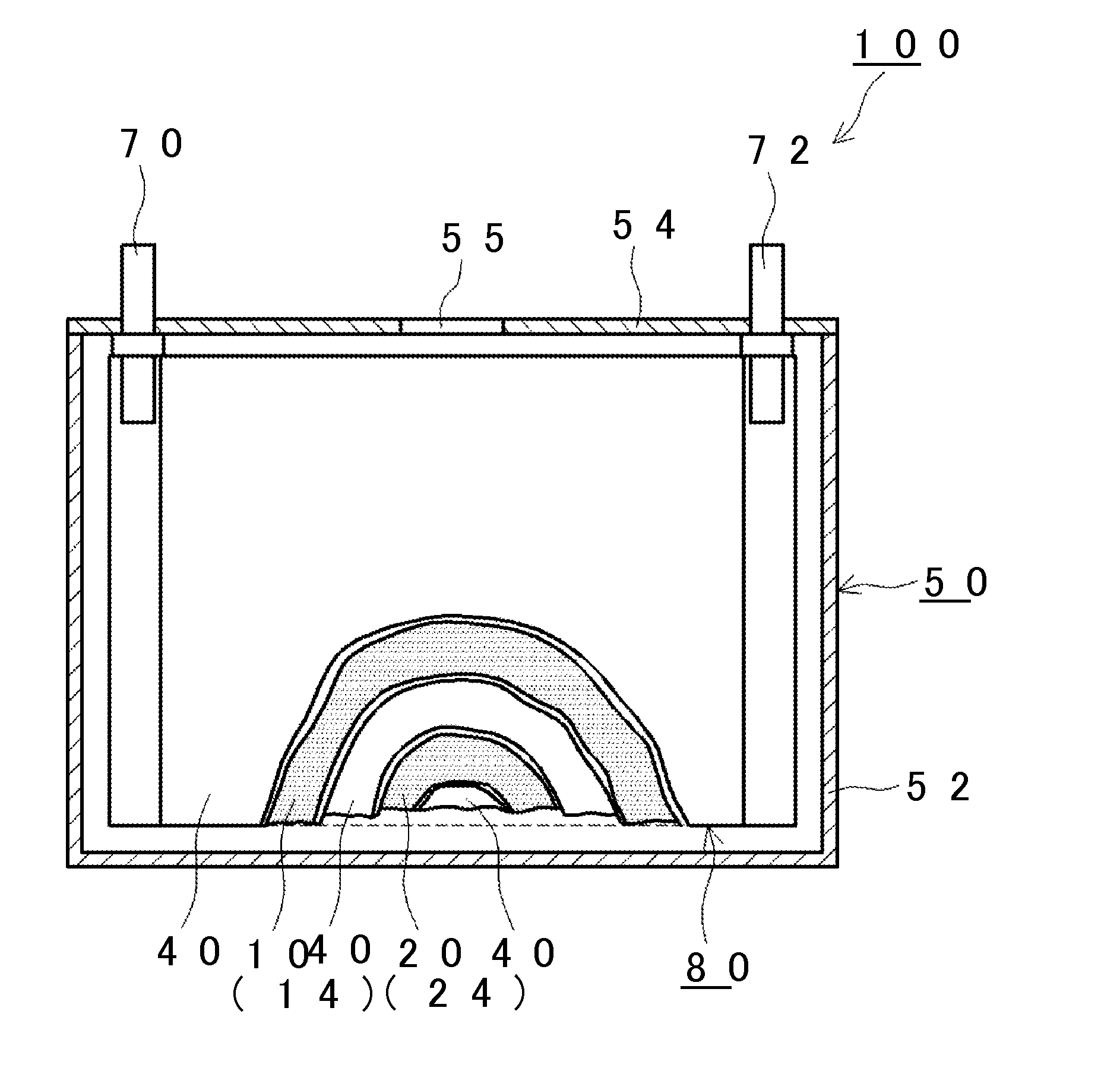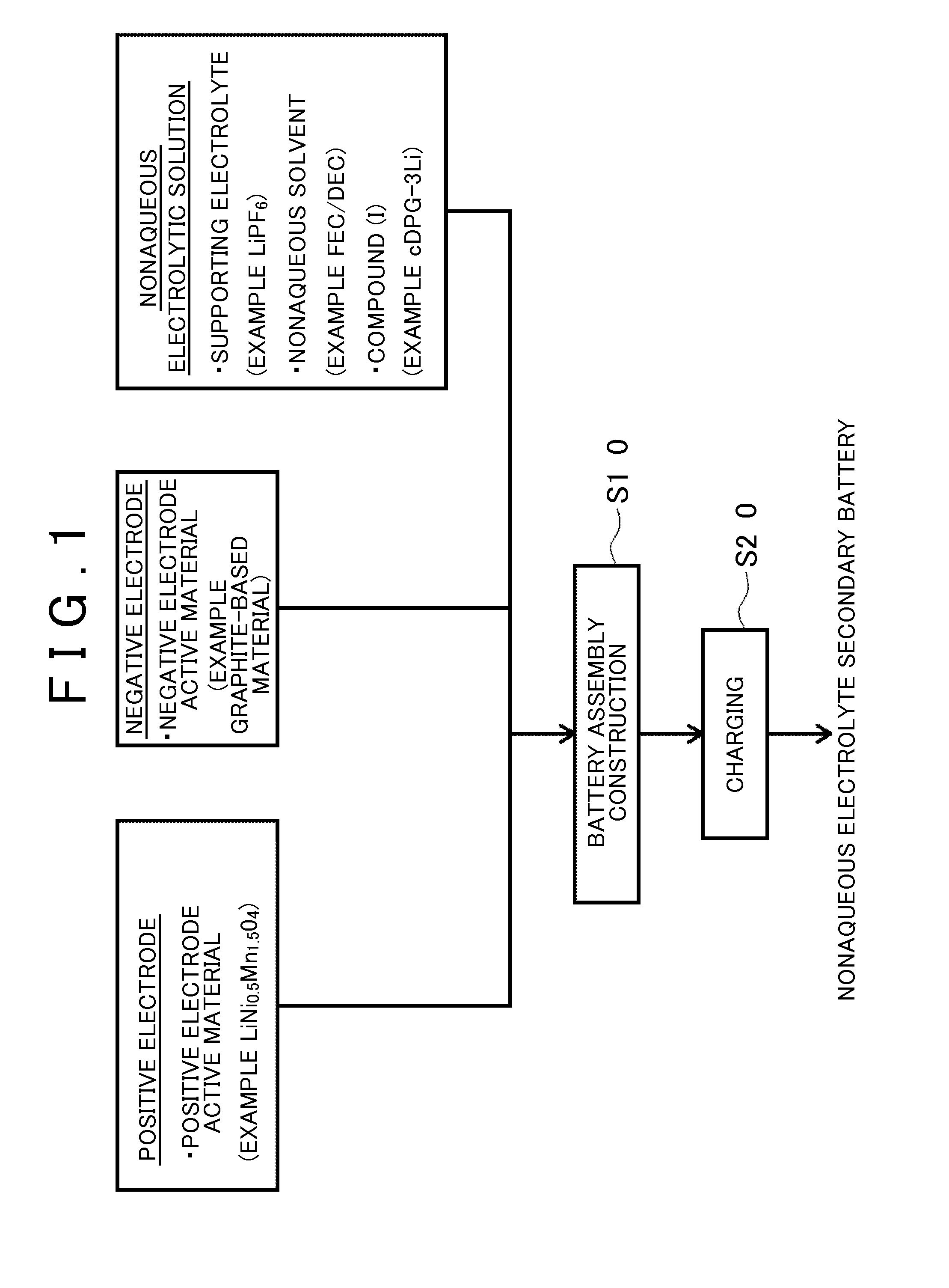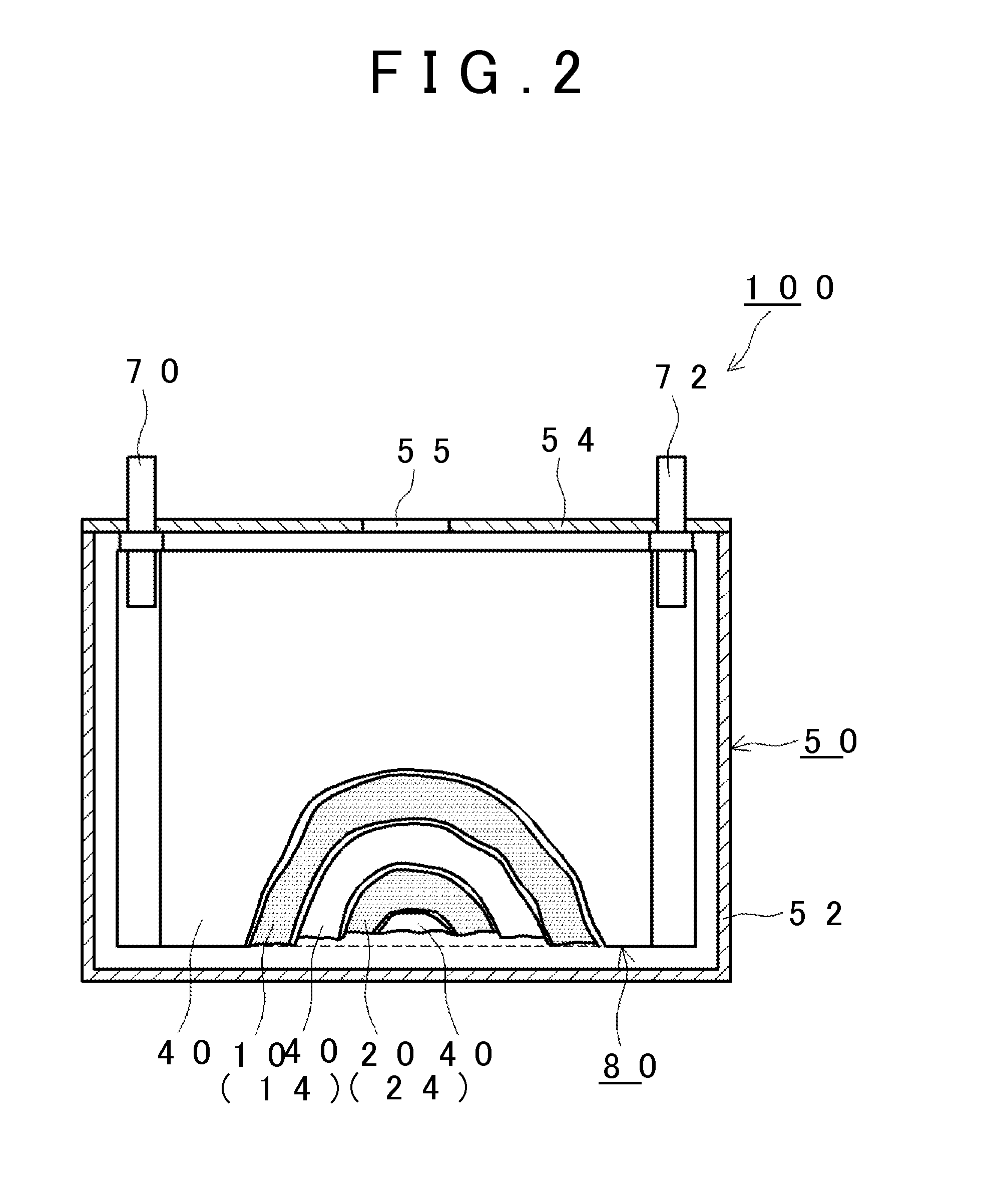Nonaqueous electrolyte secondary battery, method of manufacturing the same, and nonaqueous electrolytic solution
- Summary
- Abstract
- Description
- Claims
- Application Information
AI Technical Summary
Benefits of technology
Problems solved by technology
Method used
Image
Examples
Embodiment Construction
[0020]Hereinafter, an embodiment of the invention will be described appropriately with reference to the drawings. Matters (for example, a component of a battery which is not a characteristic of the invention) necessary to practice this invention other than those (for example, the compound (I) contained in the nonaqueous electrolytic solution) specifically referred to in this description may be understood as design matters based on the related art in the pertinent field for a person of ordinary skills in the art. The invention can be practiced based on the contents disclosed in this description and common technical knowledge in the subject field.
[0021]
[0022]A method of manufacturing a nonaqueous electrolyte secondary battery disclosed herein includes: (S10) a battery assembly construction step; and (S20) a charging step. FIG. 1 is a flowchart showing the method according to the embodiment of the invention. Hereinafter, the respective steps will be sequentially described with referenc...
PUM
 Login to View More
Login to View More Abstract
Description
Claims
Application Information
 Login to View More
Login to View More - R&D
- Intellectual Property
- Life Sciences
- Materials
- Tech Scout
- Unparalleled Data Quality
- Higher Quality Content
- 60% Fewer Hallucinations
Browse by: Latest US Patents, China's latest patents, Technical Efficacy Thesaurus, Application Domain, Technology Topic, Popular Technical Reports.
© 2025 PatSnap. All rights reserved.Legal|Privacy policy|Modern Slavery Act Transparency Statement|Sitemap|About US| Contact US: help@patsnap.com



